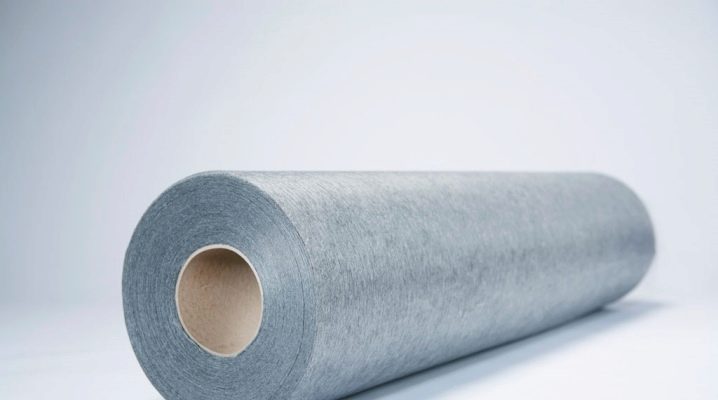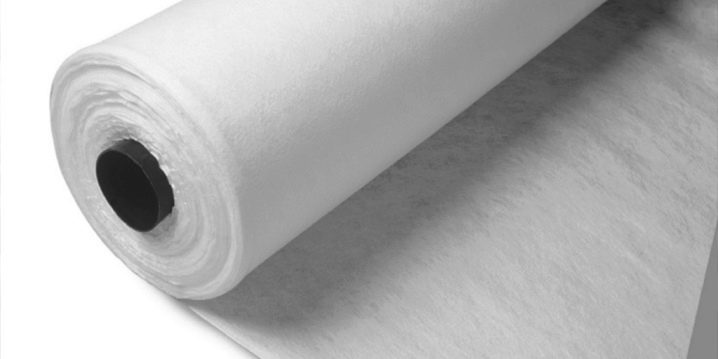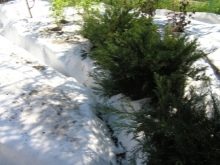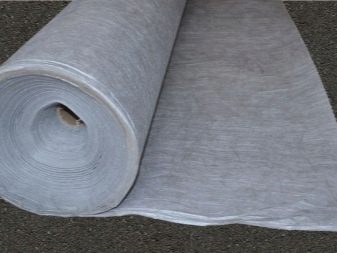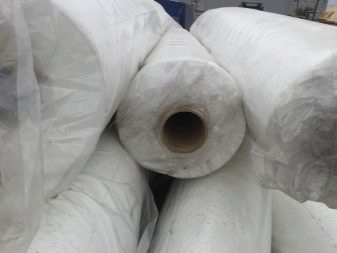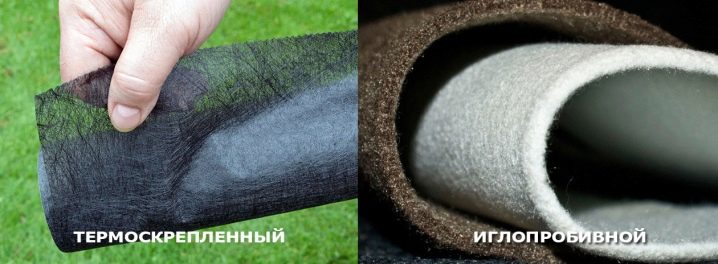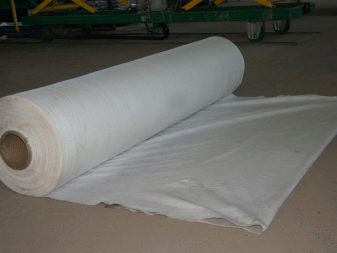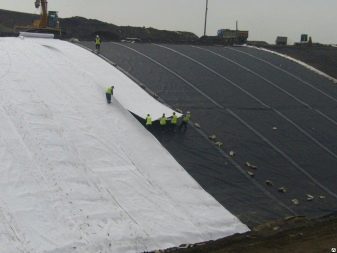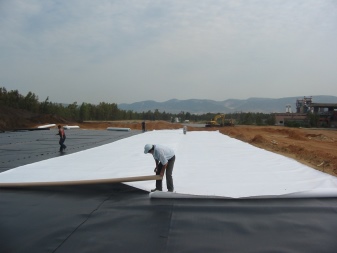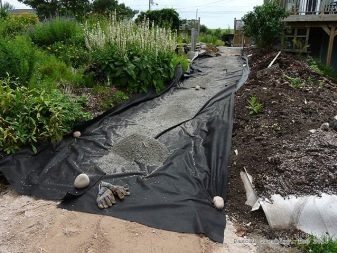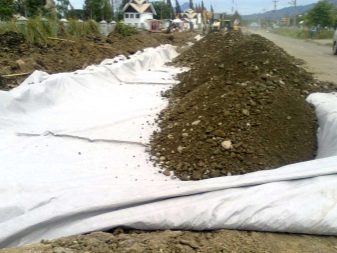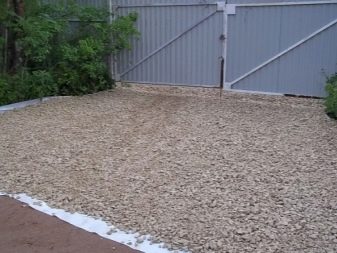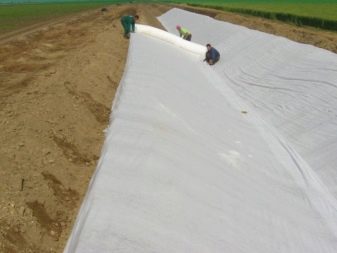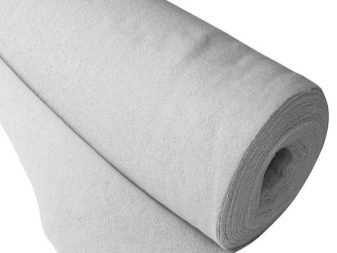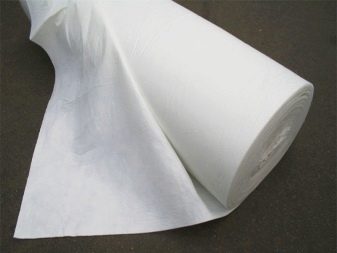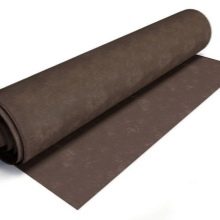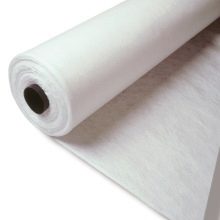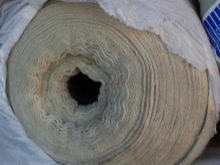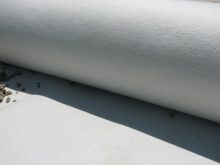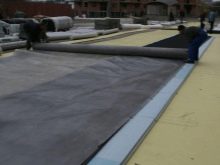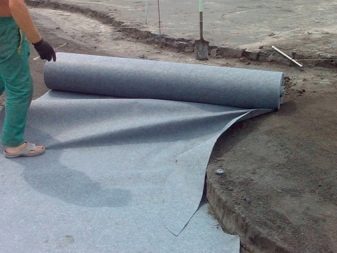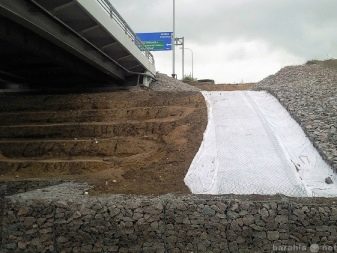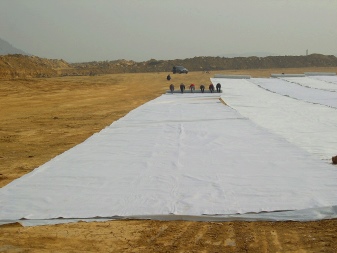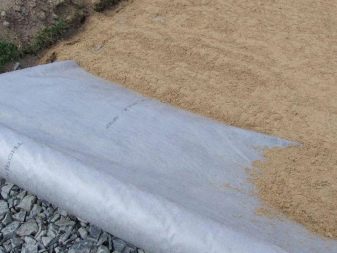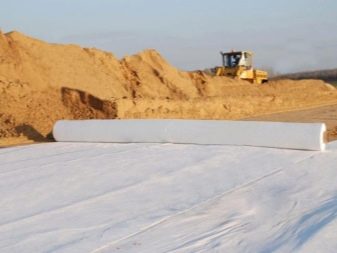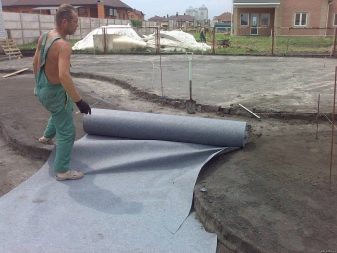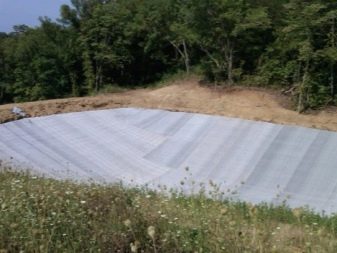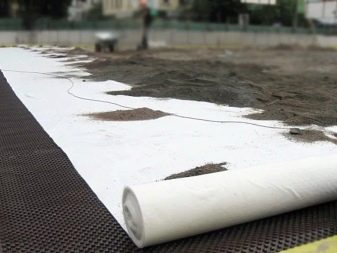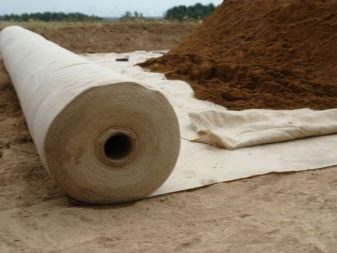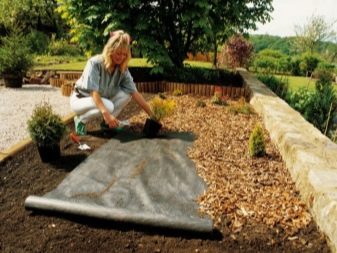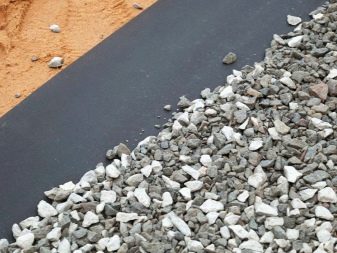Dornit geotextiles: what is it and where is it used?
On the shelves of construction stores today you can find a new type of nonwoven fabric - Dornit geotextile. This is an innovative development of Russian manufacturers, allowing to perform work on the improvement of the territory at a high technological level that meets European standards.
Unique technical characteristics, high durability and reasonable price made this material demanded and popular in construction and landscaping. Objects made with the use of this material have a long period of operation and resistance to the negative influence of the environment.
Special features
Dornit geotextiles are white non-woven needle-punching material.It is used to create a release layer with a waterproof structure between different types of building materials. The range of the geomaterial density varies from 100 to 600 g per m 2, the width of the rolls varies from 2 to 5 m, the length in the roll depends on the manufacturer. The main function is drainage and reinforcement.
The material is made of synthetic fibers in two ways:
- mechanical;
- thermal - has high tensile strength.
Types of basics:
- staple fiber - made from polymers;
- continuous solid threads of polymers;
- monofilaments made on thermoclander.
Manufacturers use polypropylene and polyester yarns to produce high-strength Dornit geofabric. The manufacture of products from waste textile industry significantly reduces drainage properties and the period of operation.
Depending on the method of manufacturing geofabric is of several types:
- needlepunch - used to perform drainage work on any kind of soil;
- thermally bonded - has high strength, durability and resistance to decay, only passes water in the transverse direction;
- piercing - made by the method of interlacing fibers, suitable for reinforcement and reinforcement.
In hardware stores you can see geotextiles, packed in rolls with different lengths. Such packaging of goods simplifies the process of transportation and installation. The price of the material depends on some factors:
- manufacturer;
- manufacturing technology;
- the cost of raw materials;
- specifications.
Advantages and disadvantages
Modern building material "Dornit" has a huge number of advantages:
- long period of operation;
- high level of elasticity;
- lack of silting;
- uniformity;
- resistance to fire;
- environmental Safety;
- low thermal conductivity;
- small weight;
- ease of installation;
- reliability and resistance to mechanical damage;
- resistance to indirect exposure to ultraviolet radiation;
- wide price range;
- high quality;
- increase in length under tension;
- increased level of filtering;
- application in different temperature conditions;
- a huge range of different types of products;
- resistance to rotting and the action of dangerous insects;
- high level of waterproofing and thermal insulation;
- elasticity.
Professional builders advise to pay attention to the low resistance of the material to direct sunlight. The material developed by Russian scientists has no analogues in the world and is a unique product with a wide scope.
Properties and specifications
Density is a technical property of a product on which its parameters depend. Quality products are manufactured according to the requirements and standards specified in GOST 52608 and GOST 50276-92.
Manufacturers of building materials offer several types of non-woven material "Dornit" with different density (g / m2):
- 150 - for construction work on the installation of pavement, sports facilities, children's recreation areas, parking lots;
- 200 - has high rates of water filtration, prevents the penetration of debris and various types of pollution into building structures and structures;
- 250 - detains a large percentage of polluting elements;
- 300 - used for soil reinforcement when mounting the foundation structure, for separating different layers of bulk building materials,for the formation of sidewalks and garden paths;
- 350 - used in landscape design;
- 400 - used for the formation of artificial reservoirs;
- 450 - has a high level of strength, is used for the installation of pipelines and water supply systems;
- 500 - used in the construction of industrial and defense facilities.
Criterias of choice
When you purchase a non-woven material "Dornit", you need to carefully examine the quality certificates and specifications indicated by the manufacturer on the package. The most significant are:
- thickness;
- density;
- breaking load under the mechanical action of external factors;
- elongation size during deformation;
- filtration percentage.
To perform different types of work it is necessary to individually select a geofabric. Installation of small structures is carried out using a versatile and inexpensive Dornit geofabric with a density of 100 to 200 g per m2, for unstable soil - 300 g per m2.
For the rational use of geotextile fabric without a large amount of waste, it is necessary to accurately measure the working surface before purchasing.
Buying a geotextile product in whole rolls,attention must be paid to the integrity of the packaging, which protects the material from the negative effects of ultraviolet rays.
Scope of application
The unique technical characteristics and properties of the innovative material “Dornit” make it possible to use it in different directions of industrial and civil industries.
The formation of a modern pavement provides for the mandatory use of non-woven material, extending the operational life of objects. The lack of stratification of bulk material, its mixing with the soil and the preservation of the required layer thickness have a positive effect on the quality and technical characteristics of the formed coating.
A combination of geotextiles and geogrids is the best option for pavement devices. Geogrid - a material that has a rigid structure in the form of a grid. Dornit geotextiles are used for walkways, highways, runways and railway tracks.
The widespread use of material in the conduct of landscape works due to its functional value:
- filtration - the ability to pass large amounts of water without deformation and tears;
- drainage - protection of structures and pipes from the penetration of clogging elements with unhindered movement of water;
- protection - waterproofing and insulation of various objects with a decrease in pressure under mechanical loads on certain areas;
- gain - protection of slopes from the movement of soil and landslides.
Designers and landscape decorators use fabric to form the basis for the installation of lawn cover, garden paths and alpine slides. Experienced gardeners use non-woven material to protect the soil from the action of ultraviolet radiation, weed germination, drying and overheating.
Durability, strength and resistance to moisture allow you to use the fabric for several years, and the polymer base protects the material from decay and the formation of mold and fungi, allows the use of different types of fertilizers and chemical solutions.
In the formation of water structures for various purposes, professional builders use Dornit geotextiles to protect the insulating layer of geomembrane from mechanical damage and deformation.
Construction of a modern country house can not be done without the use of geotextiles "Dornit":
- arrangement of the foundation structure;
- creation of flat roofs with the subsequent installation of lawns and ecological recreation areas on them;
- installation of underground communications systems;
- device of playgrounds and installation of sports designs.
Styling rules
The installation of geofabric is an important stage of construction work, on which the reliability and durability of an object depends.
- Preparatory work - the first stage of the construction process. The working surface must be cleaned of bushes and trees, remove all bumps and pits. Only on a flat and smooth surface you can lay geofabric.
- Second phase - laying of a cloth of geotextiles. A roll of material is rolled on the working surface overlapping, smoothing out all bends and waves. The size of the overlap depends on the type of surface:
- for even up to 20 cm;
- for uneven - up to 50 cm.
The strips are fixed by anchors up to 15 cm in length at a distance of 2 m from each other.
- Third stage - geogrid backfill with construction slag. The fraction size of the bulk material must be at least 10 cm. To form a quality pavement, the work must be carried out carefully, without damaging the nonwoven material.The main objective of this stage is the uniform distribution of bulk material over the entire working surface.
- Fourth stage - rolling and tamping the top layer of the surface. To carry out the tamping of the bulk layer builders use special equipment and tools.
After the quality of these stages of construction work in compliance with all the rules and technological standards, the object can be put into operation.
To create a drainage system of a private house, which will become an obstacle to washing out the soil and destroying the foundation, builders install drainage pipes in a loose layer of gravel. Under the action of groundwater, the material sags and mixes with the soil. For reliability of construction, builders dig a trench, pour gravel up to 20 cm thick and place geotextiles on top. Drainage pipes are laid on the second layer of rubble. The work is completed after the trench is completely filled with earth.
Before starting work it is necessary to examine the entire range of building materials produced by modern manufacturers. Innovative technologies and a wide range of new building materials with unique technical characteristics will bereliable assistants in the implementation of conceived ideas and in the creation of high-quality, reliable and durable objects.
Learn more about the geotextile "Dornit" you will learn from the following video.
